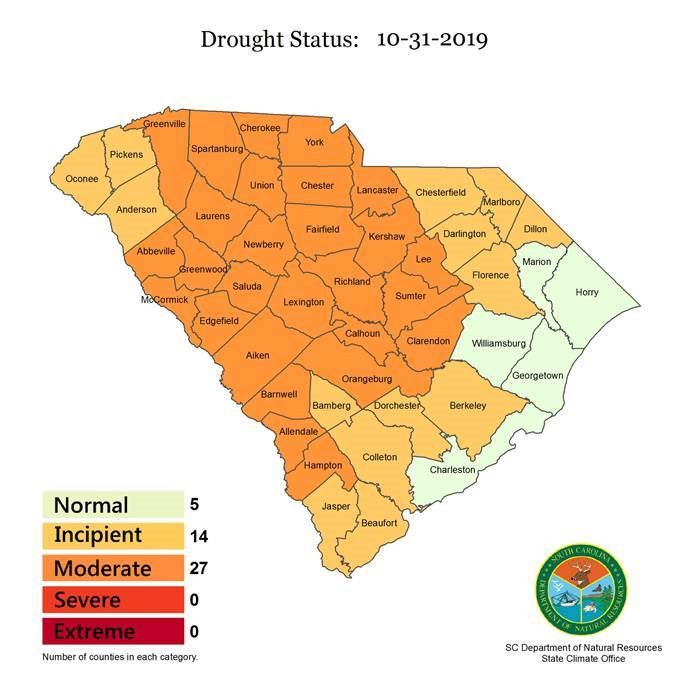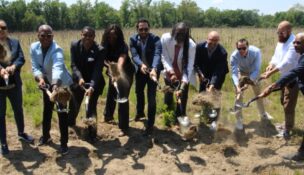USDA designates 6 Midlands counties as drought disaster areas
Staff Report //November 1, 2019//
On the same day the S.C. Department of Agriculture announced six Midlands counties have been designated natural disaster areas because of drought, the state drought response committee voted to downgrade the drought status for 11 counties.
On Thursday, U.S. Secretary of Agriculture Sonny Perdue designated Bamberg, Calhoun, Kershaw, Lexington, Orangeburg and Richland as natural disaster areas. The disaster declaration allows farmers in those counties and counties who share their borders to apply for qualified emergency loans, according to a news release from the S.C. Department of Agriculture.
The S.C. Drought Response Committee voted to downgrade Anderson, Bamberg, Beaufort, Chesterfield, Colleton, Darlington, Dorchester, Florence, Jasper, Oconee and Pickens counties from moderate to incipient drought at its meeting Thursday. Other than Bamberg, the committee maintained the five other declared disaster counties at moderate, said a news release from the committee.
 Laurens County beef producer and retired Clemson University Extension animal scientist John Irwin told the committee that the drought has taken a toll on pasture production, forcing farmers to plant fall and winter grazing at a faster rate.
Laurens County beef producer and retired Clemson University Extension animal scientist John Irwin told the committee that the drought has taken a toll on pasture production, forcing farmers to plant fall and winter grazing at a faster rate.
“The success of the fall grazing is weather-dependent, and we need a continued pattern of normal rainfall and moderate fall temperatures,” Irwin said.
Farmers have been reporting dry pasture, low crop yields and livestock sales and culling to the S.C. Department of Agriculture. One farmer called it a “crisis” at the last committee meeting on Oct. 17.
Although there has been recorded rainfall throughout S.C. recently, 78% of the state remains under some form of drought status. State climatologist Hope Mizzell told the committee increased rainfall during the last two weeks of October brought some relief, but it’s going to take more than two weeks of normal rainfall to see significant improvement.
SCDNR hydrologist Priyanka More reported a notable increase in streamflow levels in several counties in the upper Savannah River basin and along the coast. Though streamflow and lake level conditions have generally improved across the rest of the state, the news release said groundwater conditions have not shown a strong response.
“Although we’ve had a few days of rainfall, our overall situation has changed very little,” said Mike Hancock, Lugoff-Elgin Water Authority general manager. “Groundwater, agriculture and forestry conditions indicate we have a long way to go before any significant drought relief.”
Farmers in disaster-drought related areas should contact their local Farm Service Agency office for information regarding assistance. Farmers are encouraged to continue reporting drought conditions to the S.C. Department of Agriculture.
“I’m relieved that some South Carolina farmers stricken by drought will have access to these emergency provisions, and I thank Secretary Perdue for taking action,” said S.C. Commissioner of Agriculture Hugh Weathers. “This drought developed so rapidly, but we may be seeing its effects for a long time.”
s














